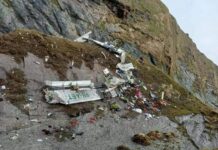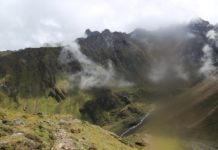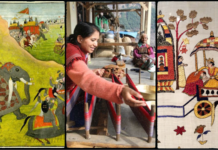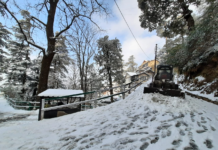Over the past few years, there has been an incredible trekking boom in the country. Trekking has gone from being an adventure sport to a recreational activity. With the increasing number of people heading out to the mountains, littering in the trails has become a major cause of concern. We’re increasingly seeing the mountains littered with single-use plastic and the repercussions of this are devastating. There is a huge need to educate trekkers on the simpler ways to go plastic-free during treks.
While it is difficult to eliminate plastic altogether, you can consciously focus on decreasing the use of single-use plastic during treks & travels.
Here are 9 ways to help you go plastic-free on your treks
-
Use reusable water bottles

Plastic bottles are one of the most common forms of litter found in the mountains. Whether it’s a Himalayan trek or a common one day trek near Bangalore like Skandagiri, plastic bottles are everywhere. Use reusable bottles instead, unless you’re going on an expedition to Mt. Kilimanjaro, you’ll need water purification tablets, for all other treks we make sure to provide boiled filtered water on the trail that you can fill up on the go. This will help you reduce your carbon footprint and save money on buying packaged water bottles!
2. Get your Cutlery from home
Another major form of litter we find are plastic spoons and straws, the best ways to avoid this is to keep cutlery set handy while on a trek. From bamboo to steel, eco-friendly vendors provide all kinds of simple, reusable cutlery sets that are easy to carry and are brilliant for the environment. Some of these sets come equipped with fork, spoons, knives, and straws that will make you enjoy your meal entirely.
3. Avoid carrying plastic bags
 Did you know that plastic bags take over 1000 years to decompose? This is disturbing beyond what we can imagine. When you’re on a multiple-day trek, the simplest and the most common way to dispose used clothes is through plastic bags, we recommend you switch to a dry bag instead. These dry bags are light to carry and can keep your used clothes dry and warm all through the trek. For those of you who love to take souvenirs home from your trekking destination, you can use a recyclable tote or a cloth bag that can be later used for various purposes.
Did you know that plastic bags take over 1000 years to decompose? This is disturbing beyond what we can imagine. When you’re on a multiple-day trek, the simplest and the most common way to dispose used clothes is through plastic bags, we recommend you switch to a dry bag instead. These dry bags are light to carry and can keep your used clothes dry and warm all through the trek. For those of you who love to take souvenirs home from your trekking destination, you can use a recyclable tote or a cloth bag that can be later used for various purposes.4. Switch to reusable razors
We understand hygiene is an integral part of life and the need of using razors when on multi-day Himalayan treks. All that we’re suggesting is for you to use reusable razors instead of plastic-single-use razors. If you can wait it out, the best thing you can carry is an electronic razor that will help you keep clean and reduce plastic.
5. Keep a tab on the tissues you use on the trek
Tissues can come in handy in various ways while on a trek. While they can be a savior, it is important to consciously ensure that you don’t throw them around and litter the trail. Wet tissues are a bigger threat than regular paper-based tissues because they are made of polyester a form of plastic that takes long to deteriorate. We do understand that wet wipes can help you tenfold in magically making you feel clean all over, however, it is just as hazardous to the environment. Instead of using wet wipes, you can think of switching to damp toilet paper, damp handkerchiefs or you could even think of making your own wet wipes made of cloth at home.
6. Switch to a more eco-friendly variant for menstrual hygiene

We know how tricky it can get when you’re menstruating during your trek, with no loos or water at times, keeping up your menstrual hygiene can be quite challenging. However, you shouldn’t let this stop you from exploring the mountains. But with a little prep and planning, you can brave the menstrual storm and trek without a worry. For starters, you can switch to a more sustainable and eco-friendly option instead of sanitary pads and tampons like menstrual cups. You can also switch to biodegradable sanitary napkins with brands like Carmesi. If you decide to use a menstrual cup, make sure that you wash it well and disinfect it with your hands before and after usage.
7. Always segregate the waste before disposing
As much as this rule helps waste segregation at home, it helps in segregation waste in the mountains as well. When you trek with us, we ensure two things: All waste created in the mountains are brought back to the base and there is clear segregation between wet and dry waste. We also carry biodegradable bags that help us carry back the waste created there. Upon disposal, these bags are eco-friendly and decompose much faster and better than polyethylene plastic bags.
8. Carry a bamboo toothbrush & reusable toiletries when trekking

Most times, we forget to carry toiletries and toothbrushes and end up buying these in the stores at the base camp. Since this is brought from the store, it is also frequently left behind as you wouldn’t want to carry it back home. To avoid such cases, it’s always better if you buy a reusable toiletry kit and switch to a bamboo toothbrush instead of plastic, even if you decide to dispose of this, it won’t cause harm to nature.
9. Follow the rule of 10
At TrekNomads, we believe in leaving the mountains in a better condition. Which is why, on our treks, we’ve devised something called a rule of 10. On every trek, at the time of descent, make sure you pick up 10 pieces of litter you find along the trail and bring it back to the base camp for disposal. By doing so, not only are you leaving the mountains in a better condition, you’re also taking the global issue of littering in your hands and doing something to prevent it.
While we should always turn our explore mode on, we should also ensure that we reduce our carbon footprint not just in the mountains but everywhere we go.





















